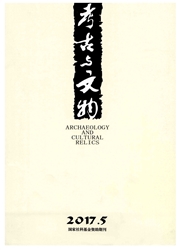

 中文摘要:
中文摘要:
我们对陕西泉护村遗址出土的距今3000年左右的8个黄牛遗骸进行了线粒体DNA分析,成功地获得了5个古代黄牛序列。泉护村黄牛由T3和T4世系组成,其中T3世系占统治地位(80%)。中介网络分析,泉护村黄牛与5个北方早期青铜时代遗址古代黄牛密切相关,极有可能来自上述地区。此外,主成分分析表明泉护村黄牛与现代中国北方组黄牛的遗传关系最近,遗传结构呈现连续性。
 英文摘要:
英文摘要:
We conduct mitochondrial DNA analysis on eight cattle remains excavated from Quanhucun site dating to around 3000 years ago, and successfully obtained five sequences. The sequences of ancient cattle were composed of haplogroups T3 and T4, of which T3 was dominant (80%). Phylogenetic network analysis indicates that Quanhucun cattle are relative to ancient cattle from five Early Bronze Age archaeological sites in Northem China, and may be from those areas. Principal component analysis indicate that ancient cattle had a close affinity to modem cattle in Northem China by presenting a continuity of genetic structure.
 同期刊论文项目
同期刊论文项目
 同项目期刊论文
同项目期刊论文
 Analysis of ancient human mitochondrial DNA from the Xiaohe cemetery: insights into prehistoric popu
Analysis of ancient human mitochondrial DNA from the Xiaohe cemetery: insights into prehistoric popu Molecular Archaeological Research on Ancient Cattle from the Early Bronze Age Changning Site,Qinghai
Molecular Archaeological Research on Ancient Cattle from the Early Bronze Age Changning Site,Qinghai Ancient DNA Evidence Reveals that the Y Chromosome Haplogroup Q1a1 Admixed into the Han Chinese 3000
Ancient DNA Evidence Reveals that the Y Chromosome Haplogroup Q1a1 Admixed into the Han Chinese 3000 Report on the 2012 Field Season of the Project Origins of Agriculture and Sedentary Communities in N
Report on the 2012 Field Season of the Project Origins of Agriculture and Sedentary Communities in N Ancient DNA Analysis of MidHolocene Individuals from the Northwest Coast of North America Reveals Di
Ancient DNA Analysis of MidHolocene Individuals from the Northwest Coast of North America Reveals Di Ancient DNA Reveals That the Genetic Structure of the Northern Han Chinese Was Shaped Prior to 3,000
Ancient DNA Reveals That the Genetic Structure of the Northern Han Chinese Was Shaped Prior to 3,000 Paleopathological Study of Human Remains from the Bronze Age Shilinggang Site in Nujiang,Yunan,South
Paleopathological Study of Human Remains from the Bronze Age Shilinggang Site in Nujiang,Yunan,South 期刊信息
期刊信息
